| Autism | Dysbiotic Gut Microbiota and Dysregulation of Cytokine Profile in Children and Teens With Autism Spectrum Disorder.
Frontiers in neuroscience (Front Neurosci ) Vol: 15 Issue Pages: 635925
Pub: 2021 Epub: 2021 Feb 10 Authors Cao X , Liu K , Liu J , Liu YW , Xu L , Wang H , Zhu Y , Wang P , Li Z , Wen J , Shen C , Li M , Nie Z , Kong XJ ,
Summary Html Article Publication |
| Autism | [Correlation between gut microbiota and behavior symptoms in children with autism spectrum disorder].
Zhongguo dang dai er ke za zhi = Chinese journal of contemporary pediatrics (Zhongguo Dang Dai Er Ke Za Zhi ) Vol: 21 Issue 7 Pages: 663-669
Pub: 2019 Jul Epub: Authors Zhao RH , Zheng PY , Liu SM , Tang YC , Li EY , Sun ZY , Jiang MM ,
Summary Html Article |
| Autism | Gut Microbiota Dysbiosis Associated With Altered Production of Short Chain Fatty Acids in Children With Neurodevelopmental Disorders.
Frontiers in cellular and infection microbiology (Front Cell Infect Microbiol ) Vol: 10 Issue Pages: 223
Pub: 2020 Epub: 2020 May 19 Authors Bojovic K , Ignjatovic ÐI , Sokovic Bajic S , Vojnovic Milutinovic D , Tomic M , Golic N , Tolinacki M ,
Summary Html Article Publication |
| |
| Autism | Autism spectrum disorder is associated with gut microbiota disorder in children.
BMC pediatrics (BMC Pediatr ) Vol: 19 Issue 1 Pages: 516
Pub: 2019 Dec 27 Epub: 2019 Dec 27 Authors Sun H , You Z , Jia L , Wang F ,
Summary Html Article Publication |
| Autism | Autism spectrum disorder is associated with gut microbiota disorder in children.
BMC pediatrics (BMC Pediatr ) Vol: 19 Issue 1 Pages: 516
Pub: 2019 Dec 27 Epub: 2019 Dec 27 Authors Sun H , You Z , Jia L , Wang F ,
Summary Html Article Publication |
| Autism | Characterization of Intestinal Microbiota and Probiotics Treatment in Children With Autism Spectrum Disorders in China.
Frontiers in neurology (Front Neurol ) Vol: 10 Issue Pages: 1084
Pub: 2019 Epub: 2019 Nov 5 Authors Niu M , Li Q , Zhang J , Wen F , Dang W , Duan G , Li H , Ruan W , Yang P , Guan C , Tian H , Gao X , Zhang S , Yuan F , Han Y ,
Summary Html Article Publication |
| Autism | Association Between Gut Microbiota and Autism Spectrum Disorder: A Systematic Review and Meta-Analysis.
Frontiers in psychiatry (Front Psychiatry ) Vol: 10 Issue Pages: 473
Pub: 2019 Epub: 2019 Jul 17 Authors Xu M , Xu X , Li J , Li F ,
Summary Html Article Publication |
| Autism | Altered Gut Microbiota in Chinese Children With Autism Spectrum Disorders.
Frontiers in cellular and infection microbiology (Front Cell Infect Microbiol ) Vol: 9 Issue Pages: 40
Pub: 2019 Epub: 2019 Mar 6 Authors Ma B , Liang J , Dai M , Wang J , Luo J , Zhang Z , Jing J ,
Summary Html Article Publication |
| Autism | Altered composition and function of intestinal microbiota in autism spectrum disorders: a systematic review.
Translational psychiatry (Transl Psychiatry ) Vol: 9 Issue 1 Pages: 43
Pub: 2019 Jan 29 Epub: 2019 Jan 29 Authors Liu F , Li J , Wu F , Zheng H , Peng Q , Zhou H ,
Summary Html Article Publication |
| Autism | Altered gut microbiota and short chain fatty acids in Chinese children with autism spectrum disorder.
Scientific reports (Sci Rep ) Vol: 9 Issue 1 Pages: 287
Pub: 2019 Jan 22 Epub: 2019 Jan 22 Authors Liu S , Li E , Sun Z , Fu D , Duan G , Jiang M , Yu Y , Mei L , Yang P , Tang Y , Zheng P ,
Summary Html Article Publication |
| Autism | The valproic acid rat model of autism presents with gut bacterial dysbiosis similar to that in human autism.
Molecular autism (Mol Autism ) Vol: 9 Issue Pages: 61
Pub: 2018 Epub: 2018 Dec 10 Authors Liu F , Horton-Sparks K , Hull V , Li RW , Martínez-Cerdeño V ,
Summary Html Article Publication |
| Autism | Analysis of gut microbiota profiles and microbe-disease associations in children with autism spectrum disorders in China.
Scientific reports (Sci Rep ) Vol: 8 Issue 1 Pages: 13981
Pub: 2018 Sep 18 Epub: 2018 Sep 18 Authors Zhang M , Ma W , Zhang J , He Y , Wang J ,
Summary Html Article Publication |
| Autism | Analysis of gut microbiota profiles and microbe-disease associations in children with autism spectrum disorders in China.
Scientific reports (Sci Rep ) Vol: 8 Issue 1 Pages: 13981
Pub: 2018 Sep 18 Epub: 2018 Sep 18 Authors Zhang M , Ma W , Zhang J , He Y , Wang J ,
Summary Html Article Publication |
| Autism | Microbiota-related Changes in Bile Acid & Tryptophan Metabolism are Associated with Gastrointestinal Dysfunction in a Mouse Model of Autism.
EBioMedicine (EBioMedicine ) Vol: 24 Issue Pages: 166-178
Pub: 2017 Oct Epub: 2017 Sep 21 Authors Golubeva AV , Joyce SA , Moloney G , Burokas A , Sherwin E , Arboleya S , Flynn I , Khochanskiy D , Moya-Pérez A , Peterson V , Rea K , Murphy K , Makarova O , Buravkov S , Hyland NP , Stanton C , Clarke G , Gahan CGM , Dinan TG , Cryan JF ,
Summary Html Article Publication |
| Autism | Distinct Microbiome-Neuroimmune Signatures Correlate With Functional Abdominal Pain in Children With Autism Spectrum Disorder.
Cellular and molecular gastroenterology and hepatology (Cell Mol Gastroenterol Hepatol ) Vol: 3 Issue 2 Pages: 218-230
Pub: 2017 Mar Epub: 2016 Dec 11 Authors Luna RA , Oezguen N , Balderas M , Venkatachalam A , Runge JK , Versalovic J , Veenstra-VanderWeele J , Anderson GM , Savidge T , Williams KC ,
Summary Html Article Publication |
| Autism | New evidences on the altered gut microbiota in autism spectrum disorders.
Microbiome (Microbiome ) Vol: 5 Issue 1 Pages: 24
Pub: 2017 Feb 22 Epub: 2017 Feb 22 Authors Strati F , Cavalieri D , Albanese D , De Felice C , Donati C , Hayek J , Jousson O , Leoncini S , Renzi D , Calabrò A , De Filippo C ,
Summary Html Article Publication |
| Autism | Ketogenic diet modifies the gut microbiota in a murine model of autism spectrum disorder.
Molecular autism (Mol Autism ) Vol: 7 Issue 1 Pages: 37
Pub: 2016 Epub: 2016 Sep 1 Authors Newell C , Bomhof MR , Reimer RA , Hittel DS , Rho JM , Shearer J ,
Summary Html Article Publication |
| Autism | Comparison of Fecal Microbiota in Children with Autism Spectrum Disorders and Neurotypical Siblings in the Simons Simplex Collection.
PloS one (PLoS One ) Vol: 10 Issue 10 Pages: e0137725
Pub: 2015 Epub: 2015 Oct 1 Authors Son JS , Zheng LJ , Rowehl LM , Tian X , Zhang Y , Zhu W , Litcher-Kelly L , Gadow KD , Gathungu G , Robertson CE , Ir D , Frank DN , Li E ,
Summary Html Article Publication |
| Autism | Increased abundance of Sutterella spp. and Ruminococcus torques in feces of children with autism spectrum disorder.
Molecular autism (Mol Autism ) Vol: 4 Issue 1 Pages: 42
Pub: 2013 Nov 4 Epub: 2013 Nov 4 Authors Wang L , Christophersen CT , Sorich MJ , Gerber JP , Angley MT , Conlon MA ,
Summary Html Article Publication |
| Autism | Fecal microbiota and metabolome of children with autism and pervasive developmental disorder not otherwise specified.
PloS one (PLoS One ) Vol: 8 Issue 10 Pages: e76993
Pub: 2013 Epub: 2013 Oct 9 Authors De Angelis M , Piccolo M , Vannini L , Siragusa S , De Giacomo A , Serrazzanetti DI , Cristofori F , Guerzoni ME , Gobbetti M , Francavilla R ,
Summary Html Article Publication |
| Autism | Reduced incidence of Prevotella and other fermenters in intestinal microflora of autistic children.
PloS one (PLoS One ) Vol: 8 Issue 7 Pages: e68322
Pub: 2013 Epub: 2013 Jul 3 Authors Kang DW , Park JG , Ilhan ZE , Wallstrom G , Labaer J , Adams JB , Krajmalnik-Brown R ,
Summary Html Article Publication |
| Autism | Gut Microbial Dysbiosis in Indian Children with Autism Spectrum Disorders.
Microbial ecology (Microb Ecol ) Vol: 76 Issue 4 Pages: 1102-1114
Pub: 2018 Nov Epub: 2018 Mar 21 Authors Pulikkan J , Maji A , Dhakan DB , Saxena R , Mohan B , Anto MM , Agarwal N , Grace T , Sharma VK ,
Summary Publication Publication |
| Autism | Differences in fecal microbial metabolites and microbiota of children with autism spectrum disorders.
Anaerobe (Anaerobe ) Vol: 49 Issue Pages: 121-131
Pub: 2018 Feb Epub: 2017 Dec 22 Authors Kang DW , Ilhan ZE , Isern NG , Hoyt DW , Howsmon DP , Shaffer M , Lozupone CA , Hahn J , Adams JB , Krajmalnik-Brown R ,
Summary Publication Publication |
| Autism | Disturbance of trace element and gut microbiota profiles as indicators of autism spectrum disorder: A pilot study of Chinese children.
Environmental research (Environ Res ) Vol: 171 Issue Pages: 501-509
Pub: 2019 Apr Epub: 2019 Feb 5 Authors Zhai Q , Cen S , Jiang J , Zhao J , Zhang H , Chen W ,
Summary Publication Publication |
| Autism | Changes in the Gut Microbiota of Children with Autism Spectrum Disorder.
Autism research : official journal of the International Society for Autism Research (Autism Res ) Vol: 13 Issue 9 Pages: 1614-1625
Pub: 2020 Sep Epub: 2020 Aug 24 Authors Zou R , Xu F , Wang Y , Duan M , Guo M , Zhang Q , Zhao H , Zheng H ,
Summary Publication Publication |
| Autism | Study of the gut Microbiome Profile in Children with Autism Spectrum Disorder: a Single Tertiary Hospital Experience.
Journal of molecular neuroscience : MN (J Mol Neurosci ) Vol: 70 Issue 6 Pages: 887-896
Pub: 2020 Jun Epub: 2020 Feb 15 Authors Ahmed SA , Elhefnawy AM , Azouz HG , Roshdy YS , Ashry MH , Ibrahim AE , Meheissen MA ,
Summary Publication Publication |
| Autism | Identifying psychiatric disorder-associated gut microbiota using microbiota-related gene set enrichment analysis.
Briefings in bioinformatics (Brief Bioinform ) Vol: Issue Pages:
Pub: 2019 Apr 5 Epub: 2019 Apr 5 Authors Cheng S , Han B , Ding M , Wen Y , Ma M , Zhang L , Qi X , Cheng B , Li P , Kafle OP , Liang X , Liu L , Du Y , Zhao Y , Zhang F ,
Summary Publication Publication |
| Autism | The Gut Microbiota and Autism Spectrum Disorders
Frontiers in Cellular Neuroscience (Front Cell Neurosci ) Vol: 11 Issue Pages: 120
Pub: 2017 Apr 28 Epub: 2017 Apr 28 Authors Li Q , Han Y , Dy AB , Hagerman RJ ,
Summary Publication Publication |
| Autism | Intestinal Dysbiosis and Yeast Isolation in Stool of Subjects with Autism Spectrum Disorders.
Mycopathologia (Mycopathologia ) Vol: 182 Issue 3-4 Pages: 349-363
Pub: 2017 Apr Epub: 2016 Sep 21 Authors Iovene MR , Bombace F , Maresca R , Sapone A , Iardino P , Picardi A , Marotta R , Schiraldi C , Siniscalco D , Serra N , de Magistris L , Bravaccio C ,
Summary Publication Publication |
| Autism | Can we reduce autism-related gastrointestinal and behavior problems by gut microbiota based dietary modulation? A review.
Nutritional neuroscience (Nutr Neurosci ) Vol: Issue Pages: 1-12
Pub: 2019 Jun 19 Epub: 2019 Jun 19 Authors Nogay NH , Nahikian-Nelms M ,
Summary Publication Publication |
| Autism | The Role of Gut Microbiota in Gastrointestinal Symptoms of Children with ASD.
Medicina (Kaunas, Lithuania) (Medicina (Kaunas) ) Vol: 55 Issue 8 Pages:
Pub: 2019 Jul 26 Epub: 2019 Jul 26 Authors Martínez-González AE , Andreo-Martínez P ,
Summary Publication Publication |
| Autism | Analysis of gut microbiome, nutrition and immune status in autism spectrum disorder: a case-control study in Ecuador.
Gut microbes (Gut Microbes ) Vol: Issue Pages: 1-12
Pub: 2019 Sep 18 Epub: 2019 Sep 18 Authors Zurita MF , Cárdenas PA , Sandoval ME , Peña MC , Fornasini M , Flores N , Monaco MH , Berding K , Donovan SM , Kuntz T , Gilbert JA , Baldeón ME ,
Summary Publication Publication |
| Autism | An approach to gut microbiota profile in children with autism spectrum disorder.
Environmental microbiology reports (Environ Microbiol Rep ) Vol: Issue Pages:
Pub: 2019 Nov 11 Epub: 2019 Nov 11 Authors Andreo-Martínez P , García-Martínez N , Sánchez-Samper EP , Martínez-González AE ,
Summary Publication Publication |
| Autism | [Correlation between gut microbiota and behavior symptoms in children with autism spectrum disorder].
Zhongguo dang dai er ke za zhi = Chinese journal of contemporary pediatrics (Zhongguo Dang Dai Er Ke Za Zhi ) Vol: 21 Issue 7 Pages: 663-669
Pub: 2019 Jul Epub: Authors Zhao RH , Zheng PY , Liu SM , Tang YC , Li EY , Sun ZY , Jiang MM ,
Summary |
| Autism | Impact of Clostridium Bacteria in Children with Autism Spectrum Disorder and Their Anthropometric Measurements.
Journal of molecular neuroscience : MN (J Mol Neurosci ) Vol: Issue Pages:
Pub: 2020 Mar 4 Epub: 2020 Mar 4 Authors Kandeel WA , Meguid NA , Bjørklund G , Eid EM , Farid M , Mohamed SK , Wakeel KE , Chirumbolo S , Elsaeid A , Hammad DY ,
Summary Publication Publication |


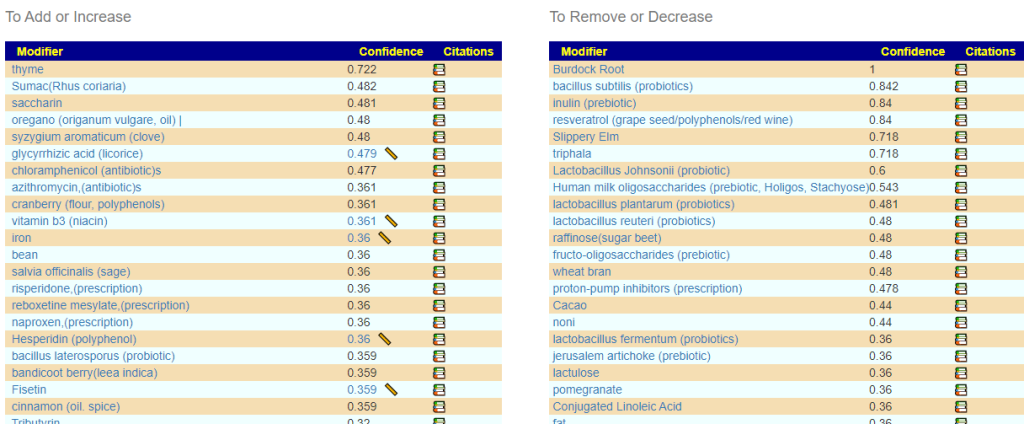



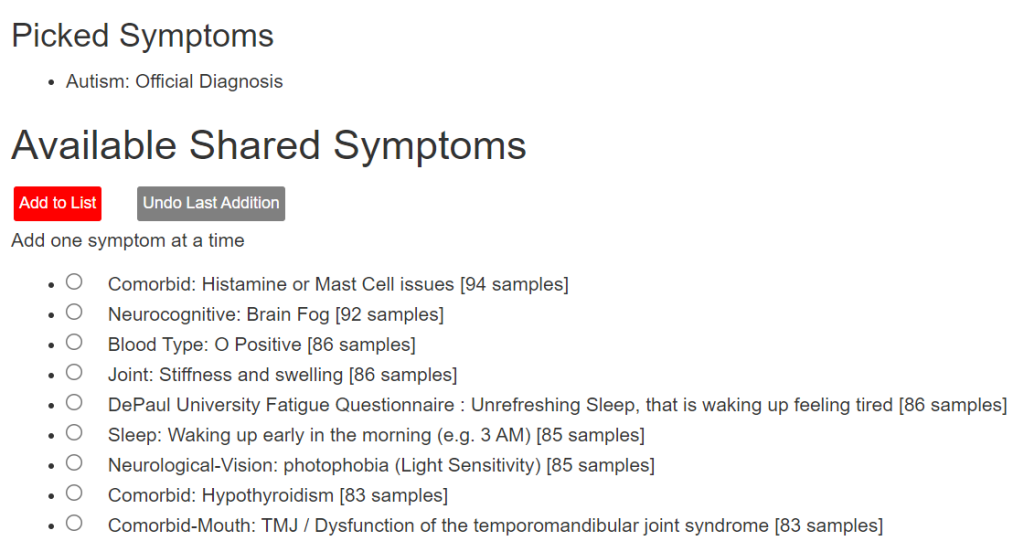













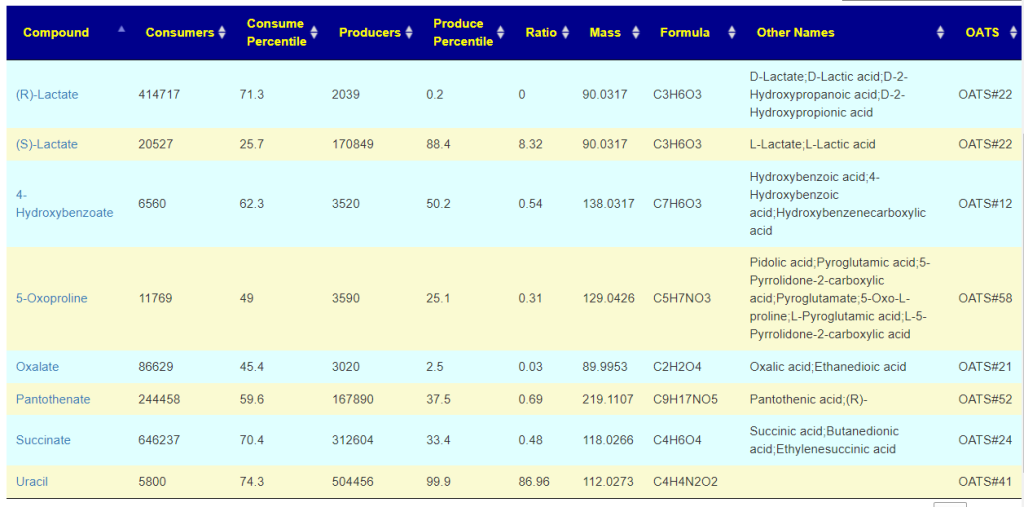
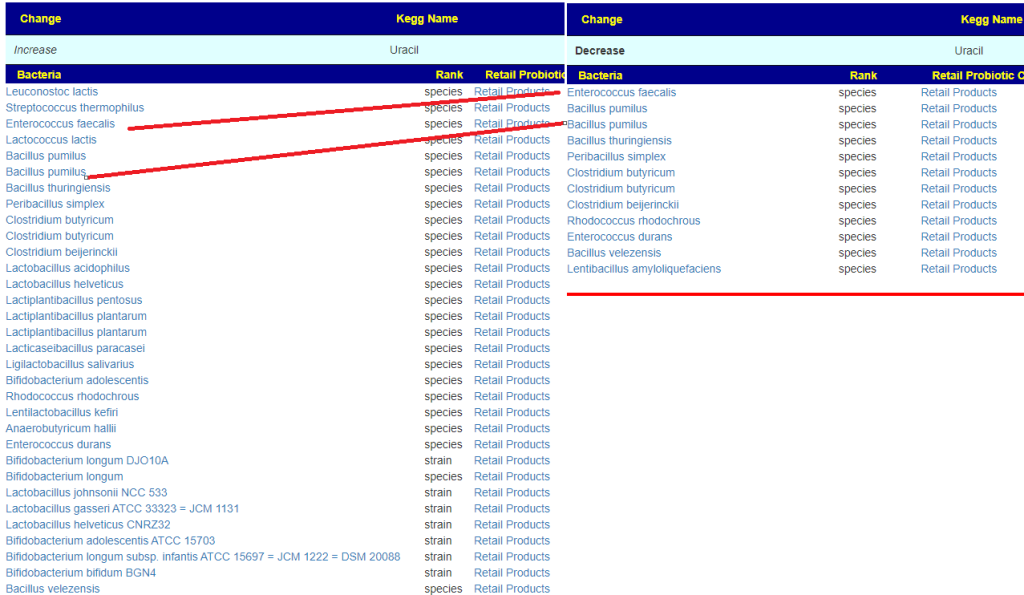






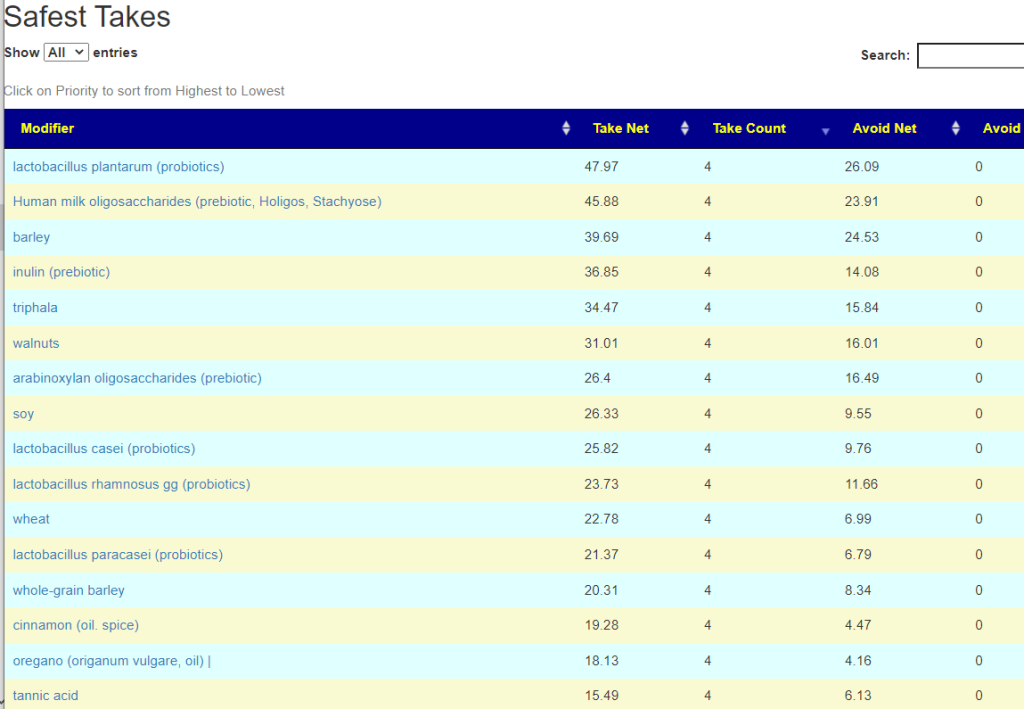


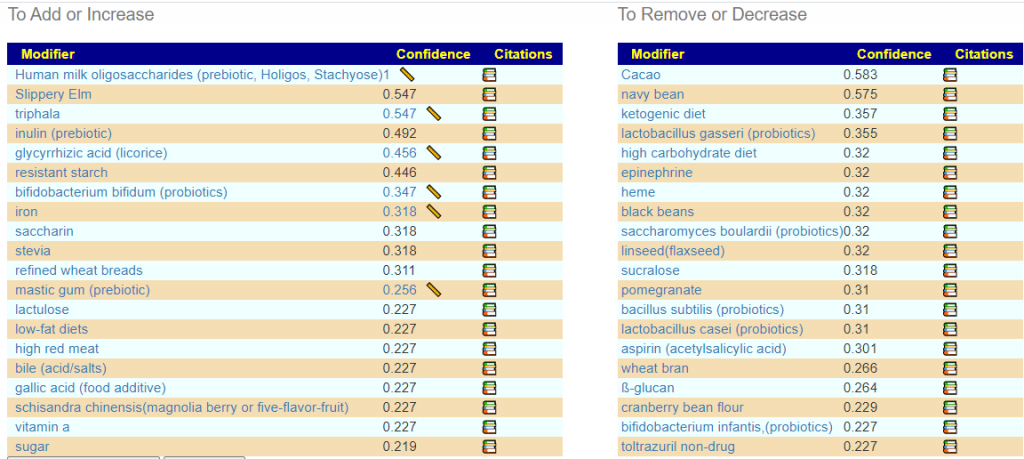

Recent Comments